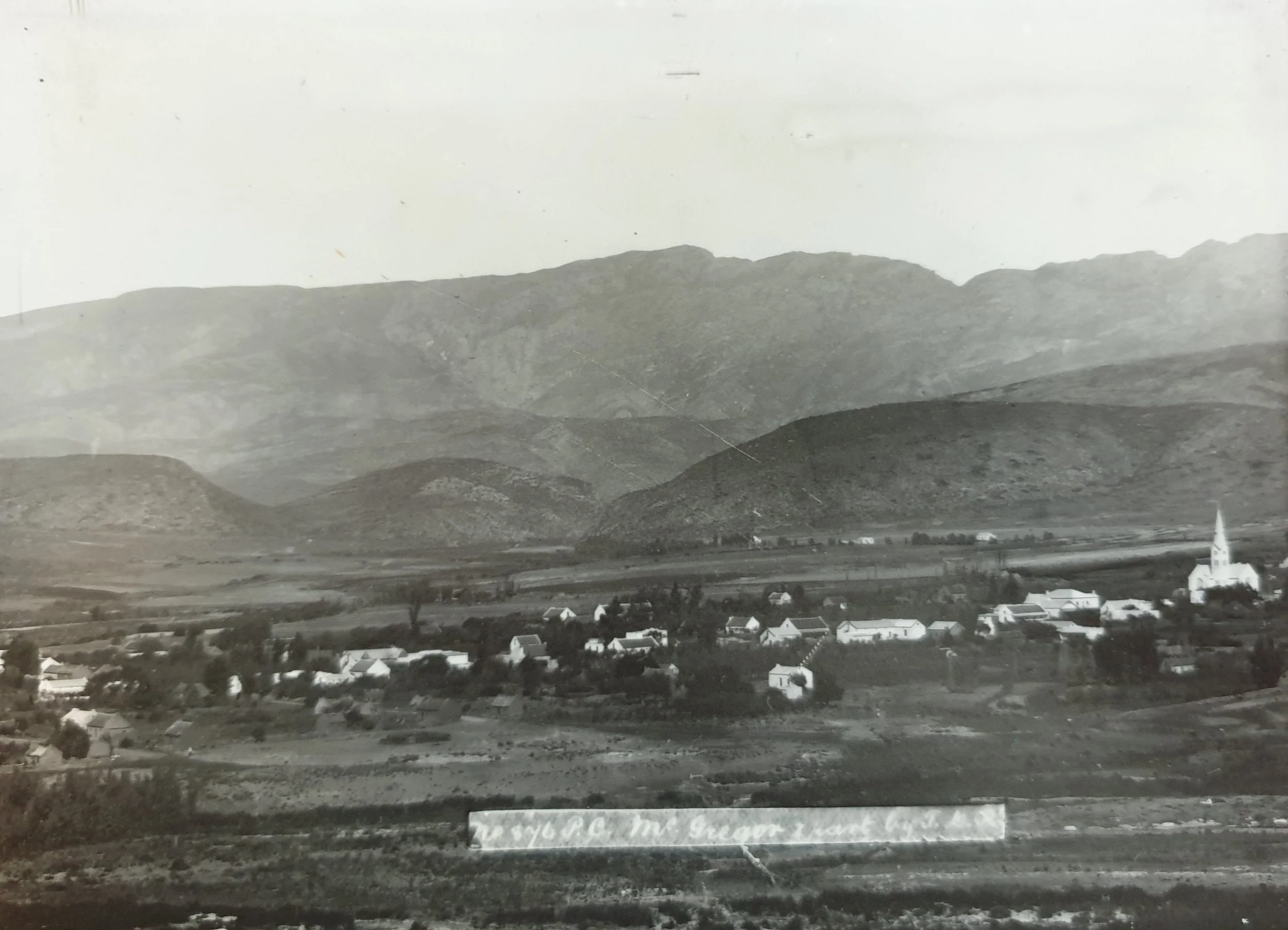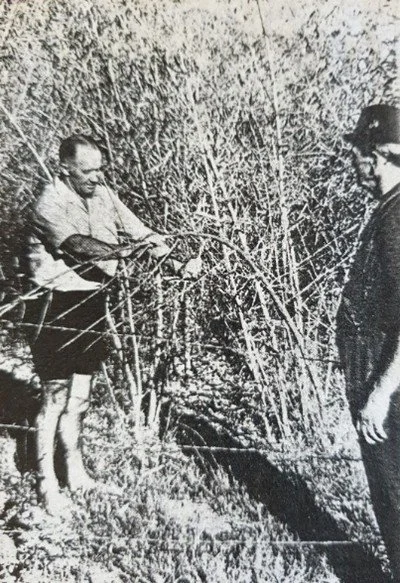
WHIPSTOCKS & APRICOTS
A HERITAGE IDENTITY
WHIPSTOCKS
The observant visitor will still see scattered clumps of bamboo in the village, which stand as a legacy to the whipstocks that were one of McGregor’s primary exports at the turn of the 19th Century. Whipstocks became part of McGregor’s identity, bonding all who lived in the village as their production involved a collective effort.
Willem Sullivan:
This is the only place in South Africa that produced the whipstocks. It was planted in rows, fertilized and watered through furrows. You had to cultivate it. Frost was one of its enemies, but the area was ideal for it.
Whipstock bamboo was originally imported from the Far East by the VOC and was found to grow well in McGregor’s hard, clayey soils. Whipmakers elsewhere in the country attached whips of varying lengths to the long, flexible bamboo poles, and these whips were used throughout the country by drivers of ox-carts. The more solid bamboo, with shafted hooks, was used in Europe to hook the transmitter arms of trolley busses onto their cables, and also to light and extinguish streetlamps before the advent of electricity. Bamboo canes were used for ladders, fishing rods and smaller articles like walking sticks. Better, lighter canes grew in poor ground, while rich ground made much thicker bamboo.
Farm records show how extensive bamboo farming was. The Houtbaai River and its tributary, the Takkap, were said to be overgrown with bamboo, with up to 27 000 clusters in the Takkap valley alone.
The manufacturing process
The process started with harvested canes being stripped and dried for six weeks. They were then smeared with fat and paraffin to kill borer beetles and to preserve the bamboo. Scorching them in special ovens made them pliable. The village had several of these ovens. After being manually straightened, the long whips (five to seven metres each) were packaged in bundles of a thousand and distributed around South Africa, as well as being exported to Europe. There was a co-operative in McGregor for distributing the finished whipstocks, run by Mr Danie Grewe. He owned large ovens for the scorching of the bamboo, located off Grewe Street on the northwest edge of the village.
Animal enclosures were made from rootstock, which surpassed stone walls as it was very quick to put up and very strong.
Tommy Payne:
At a certain age it (bamboo) becomes right for picking. They cut it, let it dry for a while and then cleaned it. There was one big oven and four or five people doing the burning (which killed the insects). The thicker part of the stock was put in the fire first, then turned around. There was no thermometer. The operator just knew the right temperature. If you know how to turn it, you didn’t get even one little black spot. Otherwise it became second-grade stock. Afterwards, using hessian bags to protect the hands, the hot bamboo was given a special coating with a kind of sticky oil or home-made beef fat. This turned it a light mahogany colour. It was beautiful. It was hard work. The leather straps for the handle grips and the plaited whips themselves were added by the purchaser, or by shopkeepers and co-ops as a service to farmers or for special presents.
Danie Grewe was a well-known local businessman, who at one time owned many properties in McGregor. He also owned the farm Koningsrivier, located in the hills to the north of the village. Grewe served a stint as mayor, and apparently owned the first motor car in the village – a Model-T Ford. He was known as the ‘whipstock king’.
Grewe had a warehouse in Worcester where he started the first co-op in the country, buying up and processing the bamboo, before selling off the finished product countrywide as well as overseas.
Changes in agriculture
The whipstock industry boomed between 1880 and 1900, then slowly declined with the advent of rail and motorised transport and with tractors taking over from draught animals. Larger-scale farmers had grape vines, but when a wine surplus in 1904 resulted in a price drop, many switched to ostrich farming, replacing the vines with lucerne for fodder. Until 1914, the McGregor district was heavily reliant on the worldwide ostrich feather market. When this market plummeted, many farmers suffered financially, returning to viticulture with the resultant wine surplus and price drop again. Apricots did well in the district’s austere conditions and this boomed into a stable and profitable venture, replacing vineyards and bamboo plantations. Many villagers struggled financially with the decline of the whipstock and ostrich economies and had no option but to turn to vegetable market gardening.
The World War II years stimulated the local dairy and fruit farming economies with the opening of the Nestlé factory in Robertson and the Langeberg cannery in Ashton.
APRICOTS
People discovered that apricots, like olives, thrive in the village’s austere climate and McGregor became known as the ‘Home of the Apricot’. Apricot production started as an alternative source of income after the whipstock industry collapsed. Villagers sold their fruit privately but also collected it in crates to be sent to the factory in Ashton.
An apricot festival was launched in the early 1990’s, and residents opened their gardens to members of the public who picked their own fruit and paid for it by weight. The festival included displays, exhibitions, stalls with local produce, and performances by the McGregor Brass Band and the Trompoppies (drum majorettes).
Tommy Payne explains:
Fruit, I remember when I was growing up it provided an income to those who had the least, because they could pay their rates. It was sold privately, not at the market.
Jane Banks:
The fields were all apricot orchards and the sight of the blossoms and the yellow sorel in sunlight was enchanting. Summer was harvest of the apricots. Everyone from tiny backyard tree owner to a 4 acre orchard owner could pick his kissie (wooden box) and take it to the depot in the village. Trucks, bicycles and wheelbarrows all carried the wooden lug boxes. The income would pay the rates. In the bigger orchards gangs would do the picking and the sound of emptying kissies into the tractor cart was an intermittent rumbling. The gang bosses were cajoling and exhorting at the women who picked. ‘Moenie blare pluk nie. Haastig, haastig,’ echoed all around.
The economy of the village was strained when the fruit co-ops kept on increasing the [minimum] weight of fruit and would not accept from small producers. First it was one ton, then five tons, then the depot moved out of the town. This was the end of small-time apricot farming.
Willem Sullivan:
I made some money with apricots. I had about 1000 trees here. But the economics are always changing.







